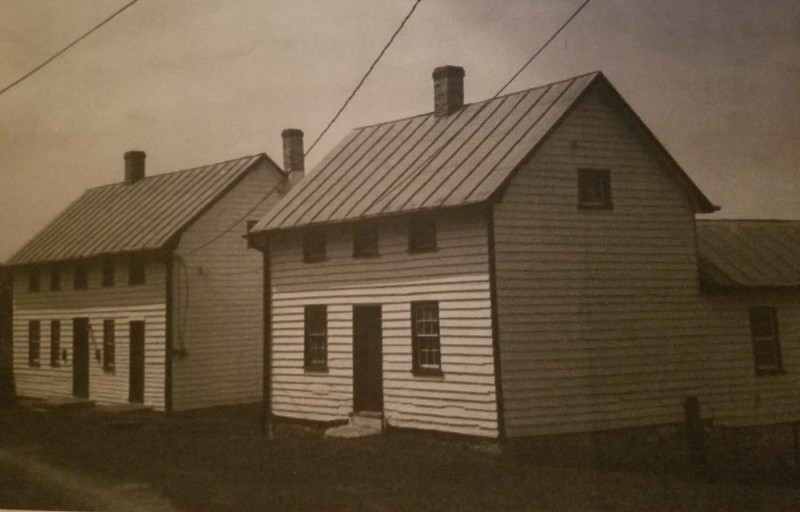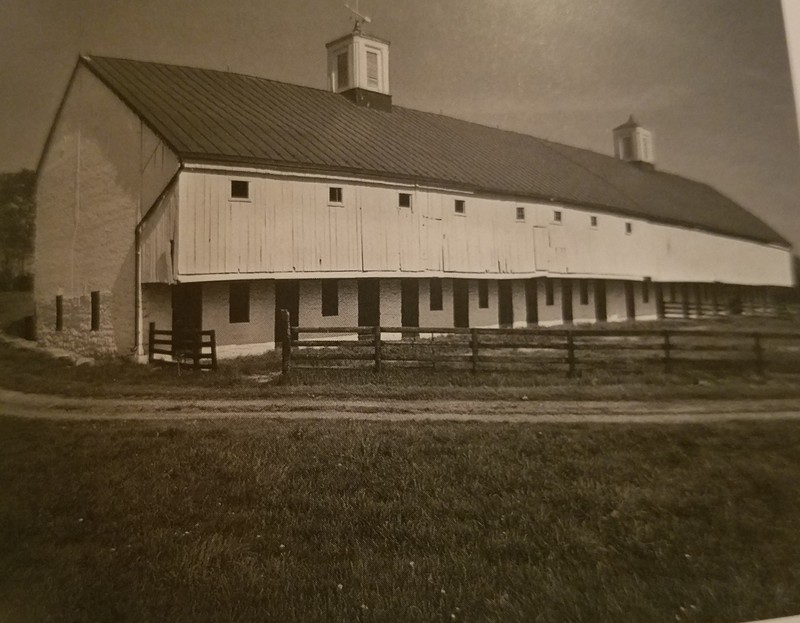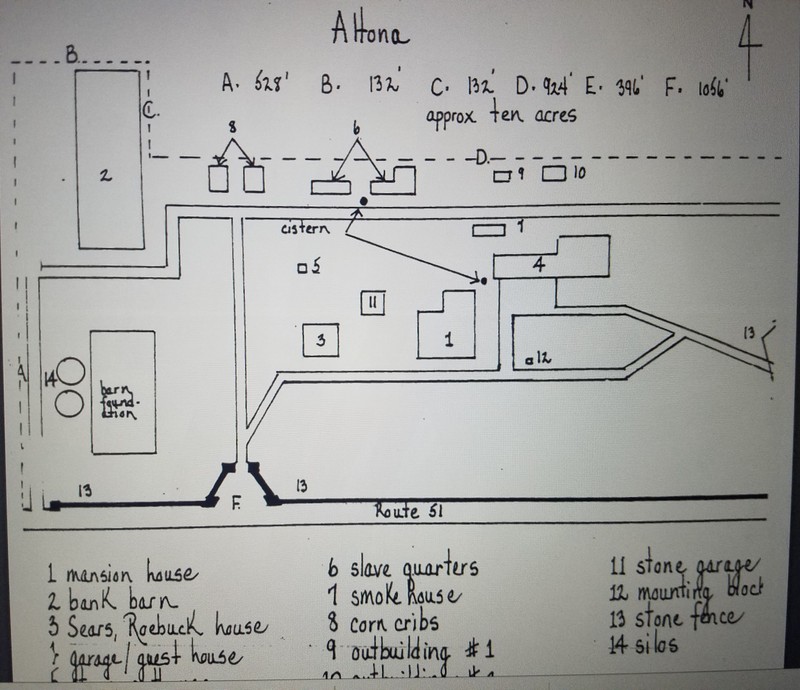Altona
Introduction
Text-to-speech Audio
Images
The slave quarters still remain in good condition. The west side has two entrances to separate the men and women as well as separate stairs.

The Bank Barn was constructed in 1850 and remains in good condition still providing for the farms agricultural needs.

This sketch provides a layout of the grounds, contributing building, slave quarters, and the main house.

The original home was expanded in the 1830s by Colonel Braxton Davenport

Backstory and Context
Text-to-speech Audio
Altona was the ancestral home of the Davenport family; Major Abraham Davenport, Jr, a Revolutionary War veteran, bought the property from Charles Washington in 1793. Abraham became one of the first magistrates in the newly formed Jefferson County in 1801 and served as sheriff in 1813. The original structure was enlarged in the 1830s by Abraham's son Braxton Davenport; his wife, Elizabeth Bedinger named the estate Altona after her family estate in Germany. Davenport created enterprise at Altona by using slave labor to expand beyond farming. He built a mill to process flaxseed oil from the flax he grew and processed it into linen cloth; planted mulberry trees; bought silkworms to introduce silk spinning into the county; and also owned one of only two flocks of Agora goats in the country. Records of the individual slaves who lived here have yet to be found; names and numbers have been lost to history. However, the quarters where they lived still stand and provide us with a testament that they were there.
In 1812, Braxton Davenport became a Colonel for his service in the War of 1812 and began the first of four terms in the Virginia Legislature. He also served as a magistrate over the Jefferson County court; he arraigned and sentenced John Brown for his raid on Harpers Ferry. On May 22, 1861, Colonel Braxton was the presiding justice over a council to authorize the Virginia county courts to make appropriations to arm the militia; a committee headed by himself was appointed to negotiate a loan of $12,500 to be appropriated to the use of soldiers of the counties and their families. Davenport later passed away in 1862. His son Henry served in the Confederate army as a first lieutenant in Stonewall Jackson's Brigade.
Cite This Entry
Blatt, Stephanie et. al. "Altona ." Clio: Your Guide to History. July 14, 2019. Accessed July 27, 2025. https://theclio.com/entry/52440
Sources
Norris, J.E. History of the Lower Shenandoah Valley. Virginia Book Company, 1972.

